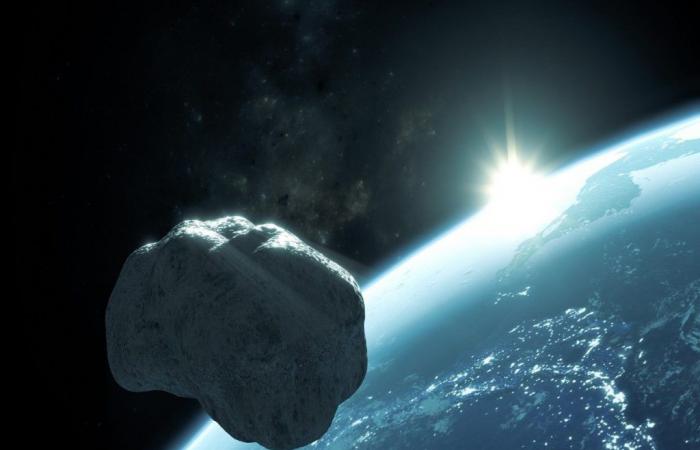The US space agency monitors thousands of asteroids in our solar system every day, some of which are considered dangerous for our planet. Discover five little-known celestial objects and the risks that they will one day reach us.
1979XB and 2007 FT3: the asteroids lost from sight
Asteroid 1979 XB is a celestial object of approximately 660m wide for approximately 390 million tonneswhich, in the event of a collision with our planet, could wipe out an entire region in no time.
It was first observed by astronomers on December 11, 1979, but was lost to sight a few years later, meaning that it has not been observed for about 40 years now.
However, the researchers had calculated during its observation a probability of collision with the Earth of 0,000055% is around 1 in 1.8 million chancewhich remains non-negligible. According to the latest known trajectories of this asteroid, it could hit the Earth on December 14 2113.
Asteroid 2007 FT3 was also spotted for the last time in 2007 by scientists. With a diameter of 340m in diameter for 54 million tonnesthis remains very little known, both in terms of its composition and its origin.
This one presents 1 in 10 million chance to hit our planet, which is much less than its counterpart. However, if it were to actually hit the Earth, this impact would occur on March 3 2030 according to the latest calculations of its trajectory. A date that is not so far away and which requires that this object be found again in the celestial infinity by then.
2023 TL4: The most recent discovery
This asteroid, with a diameter of approximately 330m for 47 million tonneswas discovered last year by astronomers. Although its dimensions are less imposing than those previously described, its impact with the Earth would not be any less devastating.
The energy of this potential impact would indeed reach 7.5 billion tons of TNTa power 5 million times greater than the bomb that hit Hiroshima in Japan at the end of the Second World War. According to NASA, this asteroid has 1 in 181,000 chance (0.00055%) of hitting Earth, much more than the two asteroids described previously.
29075 (1950 AD): the asteroid that played hide-and-seek
This asteroid was first observed by astronomers in 1950 and was quickly lost from sight thereafter, before finally being rediscovered. 50 years laterThis represents a significant danger to Earth with a chance of collision estimated at 0,0029% in 2880.
With a diameter of 1.3 km for 78 million tonnesthis asteroid is mainly composed of iron and nickel. Its impact would release energy equivalent to 75 billion tons of TNTwhich would be sufficient, according to NASA, to potentially wipe out humanity. If a few hundred years separate us from this potential impact, it will therefore be necessary to monitor it very carefully between now and then.
Bennu: the most dangerous
The asteroid Bennu is smaller than the previous one, having a diameter of 490m for a weight of 74 million tonnes. However, this one is today the most monitored, being the celestial object with the most chance of hitting the Earth in the future. Indeed, scientists estimate that Bennu has 1 in 2,700 chance to impact our planet on September 24 2182 !
Scientists have been monitoring it very closely since its discovery in 1999, trying to learn as much as possible about its composition and trajectory in order to anticipate a potential impact with Earth. In the event of a disaster scenario, it could, according to estimates, cause a crater 5 to 10 km wide and devastate everything over an area 100 times wider.
On September 24, 2023, NASA’s OSIRIS-REx mission brought a sample of this asteroid back to Earth, discovering that it contains vital elements such as glycine and hydrated minerals, allowing better understand how life can form in our Universe. However, if this discovery is very interesting, it will be appropriate to continue watch its trajectory very carefully in order to anticipate a potential future impact with Earth.






